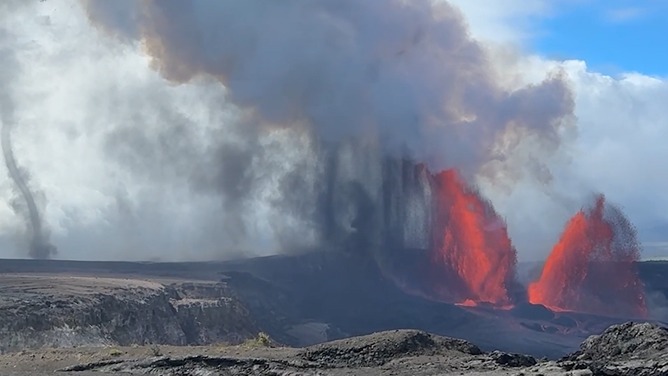
Along the winding Paluxy River in central Texas, where cottonwoods sway in the summer heat and water carves through limestone, something astonishing emerges when the droughts come. As the river recedes and the mud dries, a path appears—not paved with stones, but with the fossilized footsteps of giants. These are the dinosaur tracks of Glen Rose, preserved in silence for over 113 million years, and revealed now by the patient rhythms of nature.
This is Dinosaur Valley State Park, a place where time stands still in the most literal sense. When you kneel beside one of these tracks, your fingers brushing the edge of an ancient footprint, you’re not just looking at history—you’re touching it. These are not reconstructions or models. They are the actual impressions left by living creatures as they strode across what was once a shallow tidal flat during the Early Cretaceous period.
The riverbed here is a rare geological gift. During the time of the dinosaurs, this region was a warm, coastal plain, where the ocean met land in muddy estuaries. Large herbivorous sauropods, possibly Sauroposeidon, would have plodded through the wet lime-rich sediment, followed—perhaps stalked—by predatory Acrocanthosaurus, a three-toed carnivore nearly as fearsome as the later T. rex. When these giants walked across the muck, their weight pressed deep into the earth, creating footprints that were later buried and preserved beneath layers of sediment. Over millions of years, tectonic shifts and erosion brought them back to the surface.
What makes the Paluxy tracks so special isn’t just their age—it’s their clarity, continuity, and sheer number. Some trackways stretch for over 100 feet, with step after step perfectly aligned, like notes in a forgotten song. The detail is stunning: you can see claw marks, the spacing of toes, the difference between dragging tails and lifted gaits. It’s a moving tableau of a lost world, captured in limestone like a fossilized dance.
One particularly famous trackway, known as the “chase sequence,” appears to show a predator following a larger herbivore. Though interpretations vary, the visual drama remains: it’s a moment suspended in deep time, where we imagine the tension of pursuit and escape, preserved forever in the Earth’s skin.
The tracks draw more than scientists. They draw storytellers, dreamers, and children with wide eyes and plastic dinosaur toys in hand. Standing in a sauropod print, your feet barely filling one toe, you’re struck by a paradox—how something so immense could be so quiet. The roar of the dinosaurs may be gone, but their presence is thunderous in stillness.
There’s a sacred quality to these imprints. They are not just evidence of biology, but of movement, of presence. They remind us that life is not a static thing—it is a series of steps, decisions, migrations, and moments. The dinosaurs didn’t know they were making history as they walked. They were simply moving through their world, just as we move through ours.
But unlike the creatures who left them, these tracks don’t fade. At least not quickly. They’re vulnerable to erosion and weather, and some are reburied each season to preserve them. Teams of paleontologists and volunteers work tirelessly to document, mold, and pH๏τograph the prints before time or water claims them again. It’s a race between preservation and entropy—a small echo of the original drama played out here eons ago.
For many visitors, the Paluxy tracks are a humbling experience. You come expecting dinosaurs, and you leave with a sense of scale—not just physical, but temporal. These creatures walked here before the continents took their modern shape, before birds flew the skies, before mammals rose from the shadows. Everything we call “history” is but a blink compared to the world these tracks remember.
And yet, they are here. Not in a museum, not behind glᴀss, but in a Texas riverbed you can walk beside, step into, and pH๏τograph in the sunlight. That accessibility makes them even more powerful. They’re not artifacts confined to academia—they’re pieces of the Earth’s diary, laid bare for anyone willing to read the lines.
Children run from print to print, pretending to be the dinosaurs themselves. Couples stand together in a single footprint, marveling at its size. Scientists scan the trackways with lasers, translating their patterns into digital maps. And elders stand in quiet awe, staring down at the ghostly tracks as if remembering something they never lived through, but somehow know.
It raises a haunting question: what footprints are we leaving behind? Not just physically, but culturally, environmentally, spiritually. Will anyone millions of years from now find traces of us, and if they do, what will they see? A story of destruction? Of wonder? Of survival?
The Paluxy tracks remind us that the world is deeper than we often allow ourselves to feel. They are not just a relic—they are a message. A reminder that life moves on, that time does not stop, and that even the mightiest beings can vanish, leaving only a trail behind.
So next time you look at the ground, think of who might have walked there before you. Not just yesterday, or last century—but a hundred million years ago. A giant. A predator. A wanderer. A life like ours, but vastly different, stepping forward into a future they could not see.
Just like us.
<ʙuттon class="hover:bg-token-main-surface-secondary touch:w-[32px] flex h-[30px] w-[24px] items-center justify-center rounded-md disabled:opacity-50 disabled:hover:bg-transparent" disabled="disabled" aria-label="Phản hồi tiếp theo">
<ʙuттon class="text-token-text-secondary hover:bg-token-bg-secondary rounded-lg" aria-label="Sao chép" aria-selected="false" data-testid="copy-turn-action-ʙuттon" data-state="closed"><ʙuттon class="text-token-text-secondary hover:bg-token-bg-secondary rounded-lg" aria-label="Phản hồi tốt" aria-selected="false" data-testid="good-response-turn-action-ʙuттon" data-state="closed"><ʙuттon class="text-token-text-secondary hover:bg-token-bg-secondary rounded-lg" aria-label="Phản hồi không tốt" aria-selected="false" data-testid="bad-response-turn-action-ʙuттon" data-state="closed"><ʙuттon class="text-token-text-secondary hover:bg-token-bg-secondary rounded-lg" aria-label="Đọc to" aria-selected="false" data-testid="voice-play-turn-action-ʙuттon" data-state="closed"><ʙuттon class="text-token-text-secondary hover:bg-token-bg-secondary rounded-lg" aria-label="Chỉnh sửa trong canvas" aria-selected="false" data-state="closed">
<ʙuттon class="text-token-text-secondary hover:bg-token-bg-secondary rounded-lg" aria-label="Chia sẻ" aria-selected="false" data-state="closed">


